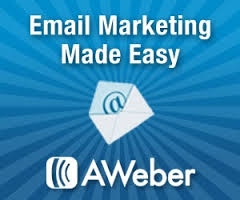As a website owner or blogger, you may decide one that having a email list is best way to generate an income. Perhaps, you have decided to give away free ebooks or create a landing page for your product and wondering why sales are not impressive or no one is signing up for you newsletter. It could be your words. below are some tips if you are using aweber email list.
 Try Aweber Email Marketing Risk Free
Try Aweber Email Marketing Risk Free
How To Use Words Properly in email List:
You write words in your marketing emails. Many or few, you use them to communicate your ideas.
But you don’t write words to communicate alone. You write them to request an action. Sometimes it’s subscribing, responding, purchasing – whatever you want readers to do.
The words that carry most of the weight of the request are the few at the end, where you normally provide a link to proceed: your call to action. This is the decision point. The words you use here could sway readers either way.
So how can you know which ones to use? You can guess, based on your own preferences. Or you can know for sure by running a split test.
A Case of Textual Turn-Off
The Cabot Heritage Corporation, a stock advisory, ran a split test on two opt-in buttons. The buttons were identical in design and location. The difference was in the wording: one read “Send My Free Report”; the other, “Start My Free Subscription.”
Just two words changed, but that change had a powerful effect. The “subscription” button decreased conversions by 22.9% in the span of just two days.
What Happened Here?
Different words trigger different associations, and those can make or break the response.
In the above case, it looks like readers associated “send my report” with a single contact and “subscription” with regular communication, requiring more commitment.
But your readers’ responses will partly depend on your subject and the relationship you already have. The phrase that crashed and burned for Cabot Heritage might take your opt-in rate soaring.
That’s why you need to test for yourself. But when you do, don’t forget to…
Think About the Long Run
In Cabot Heritage’s test, it looks like people preferred the idea of one mailing to regular updates. But whichever button they pushed, they were added to the same mailing list.
It would be interesting to see how people who didn’t expect regular mailings reacted when they started getting them. Did the unsubscribe and spam report rates go up with the opt-in rate?
When choosing the words you want to test, keep in mind that you need to set correct expectations. A well-informed subscriber is a happy subscriber.
How To Test Your Call to Action
Your first step is to write several options that set those expectations and fit the usual “voice” of your brand – how you usually represent your brand in writing.
There are several approaches you could take:
Once you’ve designed a few options, split test them against each other. (If you use AWeber, here’s how to test your web forms and your broadcasts.) Soon you’ll know just what phrase calls your audience to action best.
Who Answers When You Call?
Are you getting the response you want from your calls to action? Are the subscribers you collect interested and engaged? Do they click and purchase?
Have you split test your call to action in the past? How could you test it now for an even better response?
Share your thoughts below!
By Amanda Gagnon Source: Do your Words scare people?
